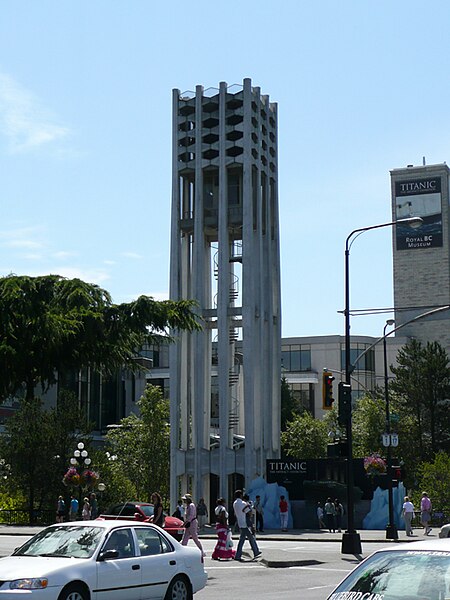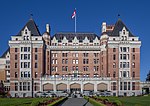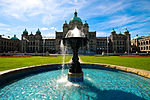Founded in 1886, the Royal British Columbia Museum (sometimes referred to as Royal BC Museum) consists of The Province of British Columbia's natural and human history museum as well as the British Columbia Provincial Archives. The museum is located in Victoria, British Columbia, Canada. The "Royal" title was approved by Queen Elizabeth II and bestowed by HRH Prince Philip in 1987, to coincide with a Royal tour of that year. The museum merged with the British Columbia Provincial Archives in 2003.
The Royal BC Museum includes three permanent galleries: Natural History, Becoming BC, and the First Peoples Gallery. The museum's collections comprise approximately 7 million objects, including natural history specimens, artifacts, and archival records. The natural history collections have 750,000 records of specimens almost exclusively from BC and neighbouring states, provinces, or territories. The collections are divided into eight disciplines: Entomology, Botany, Palaeontology, Ichthyology, Invertebrate Zoology, Herpetology, Mammalogy, and Ornithology. The museum also hosts touring exhibitions. Previous exhibitions have included artifacts related to the RMS Titanic, Leonardo da Vinci, Egyptian artifacts, the Vikings, the British Columbia gold rushes and Genghis Khan. The Royal BC Museum partners with and houses the IMAX Victoria theater, which shows educational films as well as commercial entertainment.The museum is beside Victoria's Inner Harbour, between the Empress Hotel and the Legislature Buildings. The museum anchors the Royal BC Museum Cultural Precinct, a surrounding area with historical sites and monuments, including Thunderbird Park. The museum also operates traveling exhibitions which tour the province of BC, as well as international exhibits Guangzhou, China.
On March 26, 2012, Jack Lohman was appointed CEO of the Royal BC Museum. Various groups assist with the development, success, and maintenance of the Royal BC Museum. These include volunteers, who number over 500 and outnumber the Royal BC Museum staff 4 to 1; the Royal BC Museum Foundation (formerly Friends of the Royal BC Museum Foundation), a non-profit organization created in 1970 to support the Royal BC Museum financially and to assist its work by forming links within the community; Security Services, responsible for risk management, emergency response, security services, and business continuity expertise; and Property Management and Operations, who focus on sustainability, recycling, and environment control within the museum.












